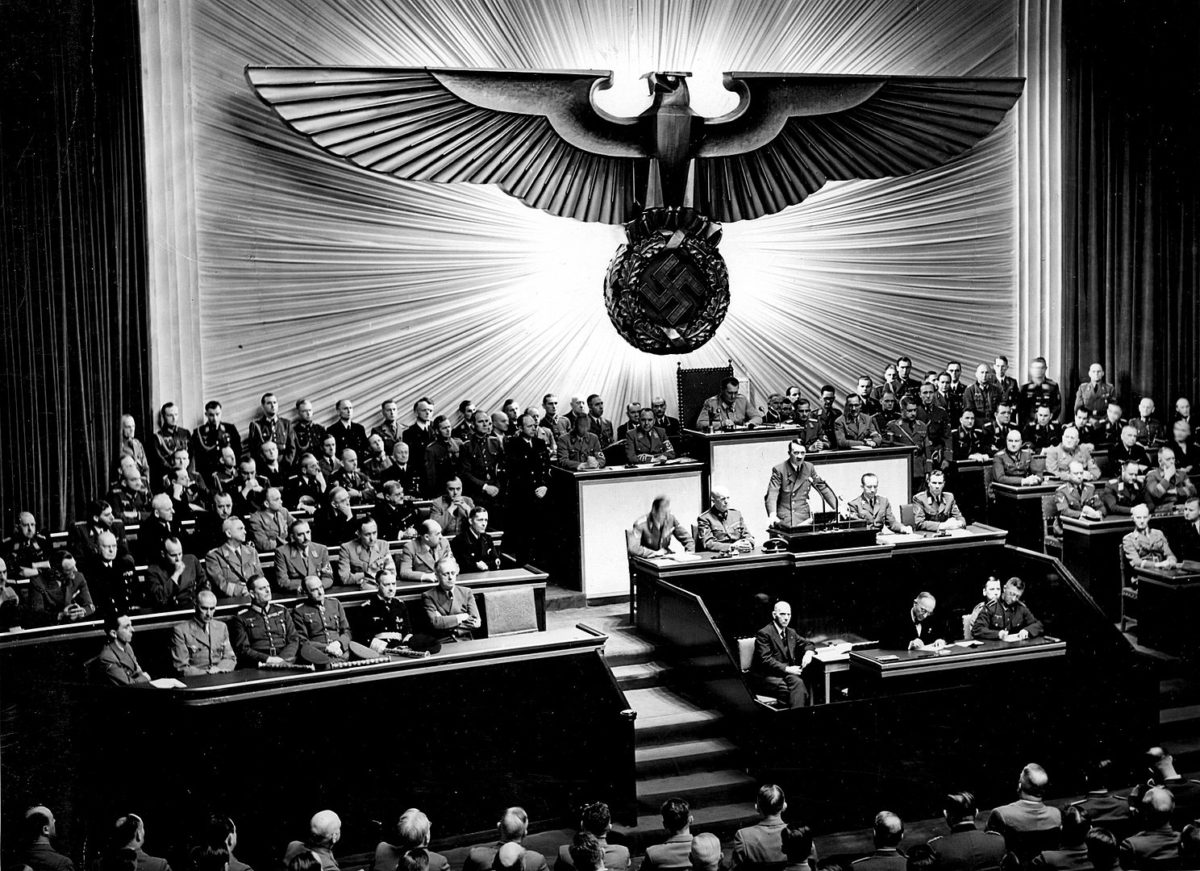In June 1940 a serious faction within the British government urged making peace with Germany. In September 1940 the RAF was within a whisker of defeat, leaving Britain open to invasion. In October 1941 Russia teetered on the brink of collapse as panic gripped Moscow and German troops stood forty miles away.
Had history taken slightly different turns at any of these junctures, Hitler could well have achieved his dream of total conquest of Europe.

The HistoryNet Box: Goodies for history lovers, curated by our editors, delivered every season—straight to your door.
What would have happened then? In a slim but fascinating book titled Visions of Victory, historian Gerhard L. Weinberg (author of the magisterial A World at Arms, widely considered the finest study of World War II yet written) followed a trail of intriguing hints left by the major heads of state about the postwar world each envisioned. It was Franklin D. Roosevelt’s vision that most nearly matched the post- 1945 world order that actually materialized. But unsurprisingly, the most chilling vision was Hitler’s. In his mind, the sequel to a victorious World War II would have been World War III, followed by World War IV, and so on—until Germany had conquered the entire globe.
The initial victory in Europe would have been followed by the direct annexation of countries Hitler deemed suitably Nordic: Denmark, Norway, Sweden, and Finland, as well as the German-speaking region of Switzerland. The brutal “General Government” of Poland would have extended into the former Soviet Union as far as 70 degrees east longitude—a bit more than half of the entire Russian empire—and the entire region converted into a vast pool of expend able slave labor. Japan would (temporarily) receive the rest of the Soviet Union.
Mussolini would be permitted to acquire lands approximating those of the Roman Empire, except that Hitler intended to retain control of France and Great Britain (as well as Ireland) and convert Spain and Portugal into satellite states. In sub Saharan Africa he expected to restore the colonies Germany had lost after the First World War and seize the rest from defeated European powers. Since the Afrikaners were implacable racists much after Hitler’s own heart, he anticipated a pro-Nazi South Africa. It goes without saying that the Nazis intended to eradicate the Jews and other “sub-humans” in every region they controlled. But they also intended to eliminate Christianity and to adopt a state policy of polygamy so that the male survivors of wars expected to kill four million German soldiers would be able to impregnate enough German women to forestall a drop in population.
Hitler plainly saw his principal allies, Italy and Japan, as partners of convenience. As a fascist state, Italy might be permitted its new empire on a permanent basis, but Japan, after doing the dirty work of conquering China, the eastern half of the Soviet Union, southeast Asia, Australasia, and the central Pacific, would eventually be conquered in turn—though only after the destruction of the United States, the last great power free of Axis control.
Learn more about
Weinberg discerned only the vaguest German plans for how it intended to deal with this last problem, the elimination of the United States. A major reason for this seems to have been Hitler’s persistent underestimation of the American population as a “race of mongrels,” unable to present a serious threat to Aryan military prowess and liable to collapse from within at any moment. As late as the autumn of 1944, Hitler continued to see the British as his most dangerous adversary in the West, notwithstanding the fact that by then the United States was contributing not only the most manpower in the European Theater of Operations but also the most tanks, aircraft, and artillery. Indeed, by that point American military aid was propping up the war efforts of every nation fighting the Axis powers. Hitler’s blindness on this subject underscored not only the extent to which racism dominated his world view but also his monumental ignorance.
Hitler’s original strategy for Europe wisely called for completing the conquest of western Europe before turning on the Soviet Union—which maintained its non aggression pact with Germany right up to the moment of the Nazi invasion in June 1941. Had all gone according to plan, the undivided might of the German army would have fallen on Russia, and Hitler’s vision of a Europe under German domination from Ireland to the Urals might well have been realized.
But Hitler’s overall grand strategy—to seize the rest of the world on the installment plan—would have then encountered a problem that Hitler seems never to have considered.
Hitler assumed that the Japanese would obligingly remain at war with China and the United States until he could gobble up his erstwhile allies. Yet Imperial Japan clearly understood that its partnership with Nazi Germany was temporary, especially given the virulent racism on which Nazism rested. (Hitler might call the Japanese “honorary Aryans,” but the phrase itself reveals the ideological awkwardness of the alliance.) And history is replete with reversals of alliance in the face of new circumstances. The Austro Prussian bruderkrieg of 1866 gave way to the Dual Alliance between Germany and Austria-Hungary in 1879; Italy, the third member of the Central Powers in World War I, actually entered that war on the side of Allies, and would switch sides in World War II as well. And ten years after the end of World War II, the United States and West Germany became partners in the North Atlantic Treaty Organization.
GET HISTORY’S GREATEST TALES—RIGHT IN YOUR INBOX
Subscribe to our HistoryNet Now! newsletter for the best of the past, delivered every Monday and Thursday.
Thus, long before Nazi Germany could have realized its ultimate aim of world conquest, the rest of the world would have surely set aside their differences in the face of this obvious, massive, and implacable threat. The result would have given the United States footholds in south and east Asia at the very least, while it is unlikely that Germany would ever have acquired the ability to project armies across the vastness of the Atlantic Ocean, much less the Pacific. The best it could have done would have been to create a fleet of transatlantic bombers like the notional Amerikabomber (which, incidentally, seems to have been designed with the idea of a one-way trip culminating not in a traditional bombing run but rather in crashing into New York City skyscrapers).
The United States would have responded with the decidedly non-notional Convair B-36 “Peacemaker,” the first intercontinental bomber, designed to strike Berlin from bases in northeastern Canada. The B-36 began development in 1941, at a time when it seemed as if Hitler might indeed overrun all of Europe. The first prototype flew in 1946 and the huge six engine bomber became operational two years later. By 1948, the United States possessed an arsenal of more than fifty atomic bombs. (It is highly doubtful that Germany would have achieved any atomic weapons by that time, given how behind its nuclear program was.) The “mongrel race” would then have extinguished Hitler’s “master race” beneath dozens of mushroom-shaped clouds.
*Thank you for visiting historynet.com. If you buy something through our site, we might earn a commission.





